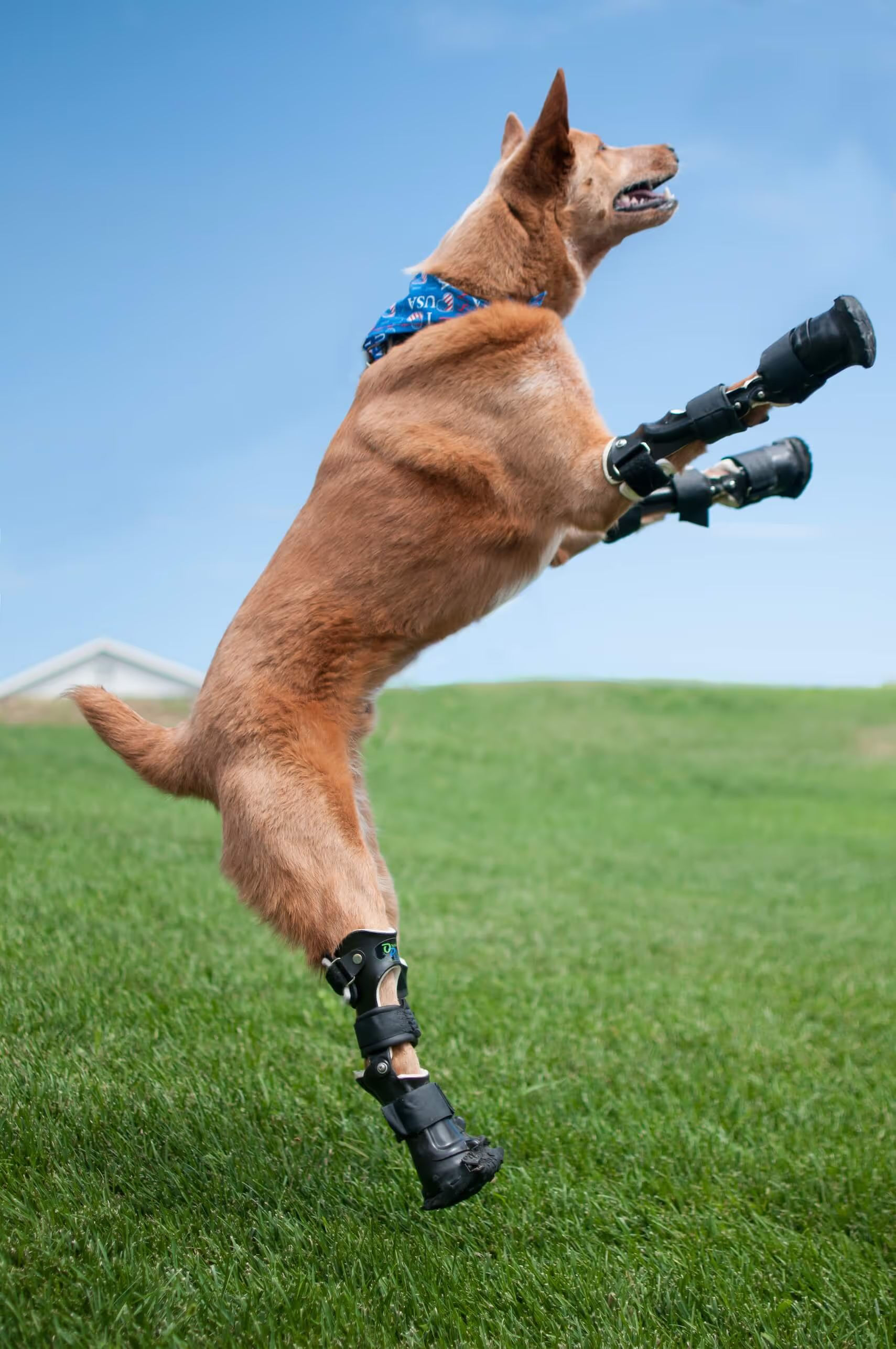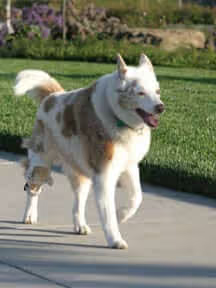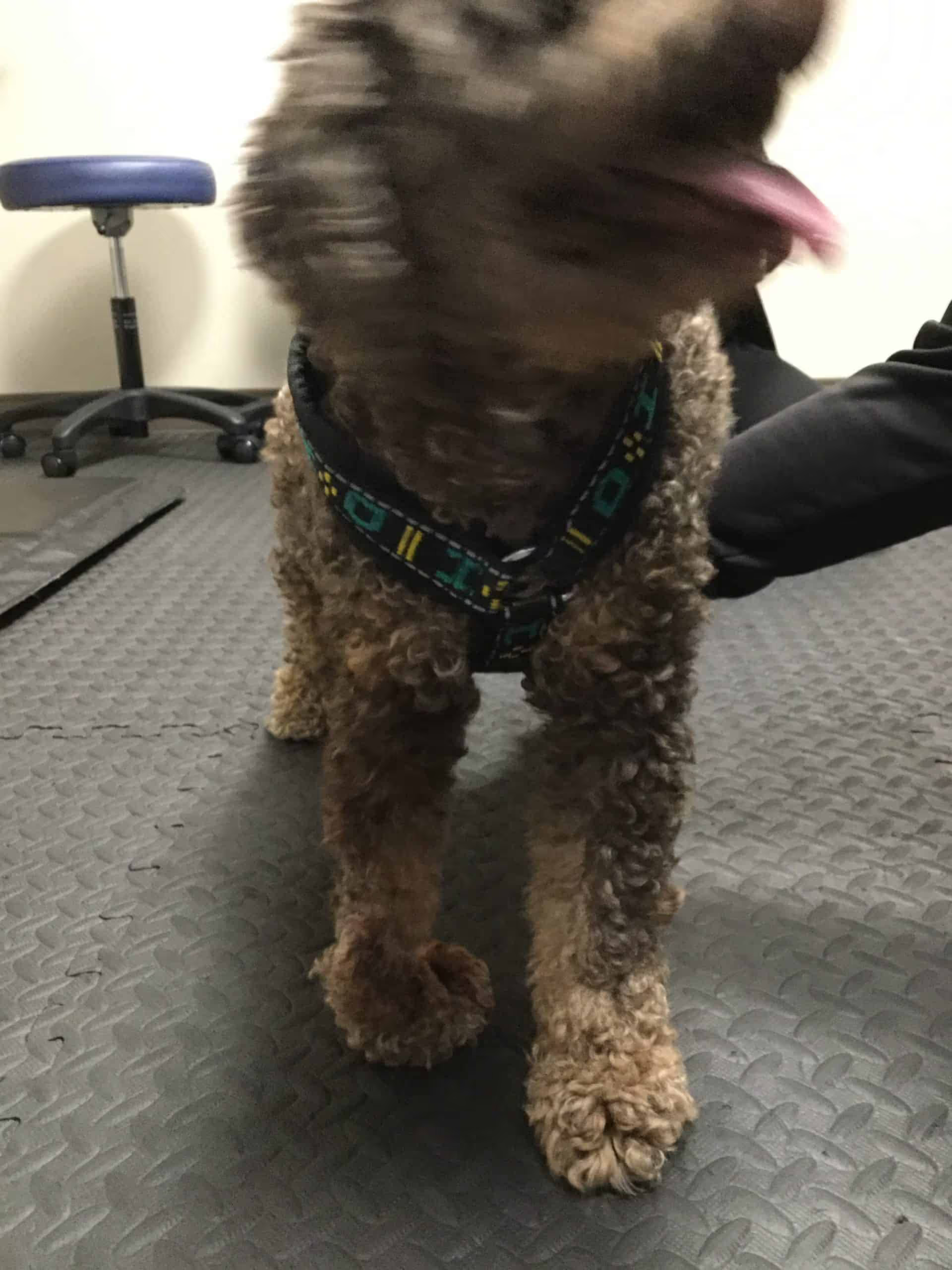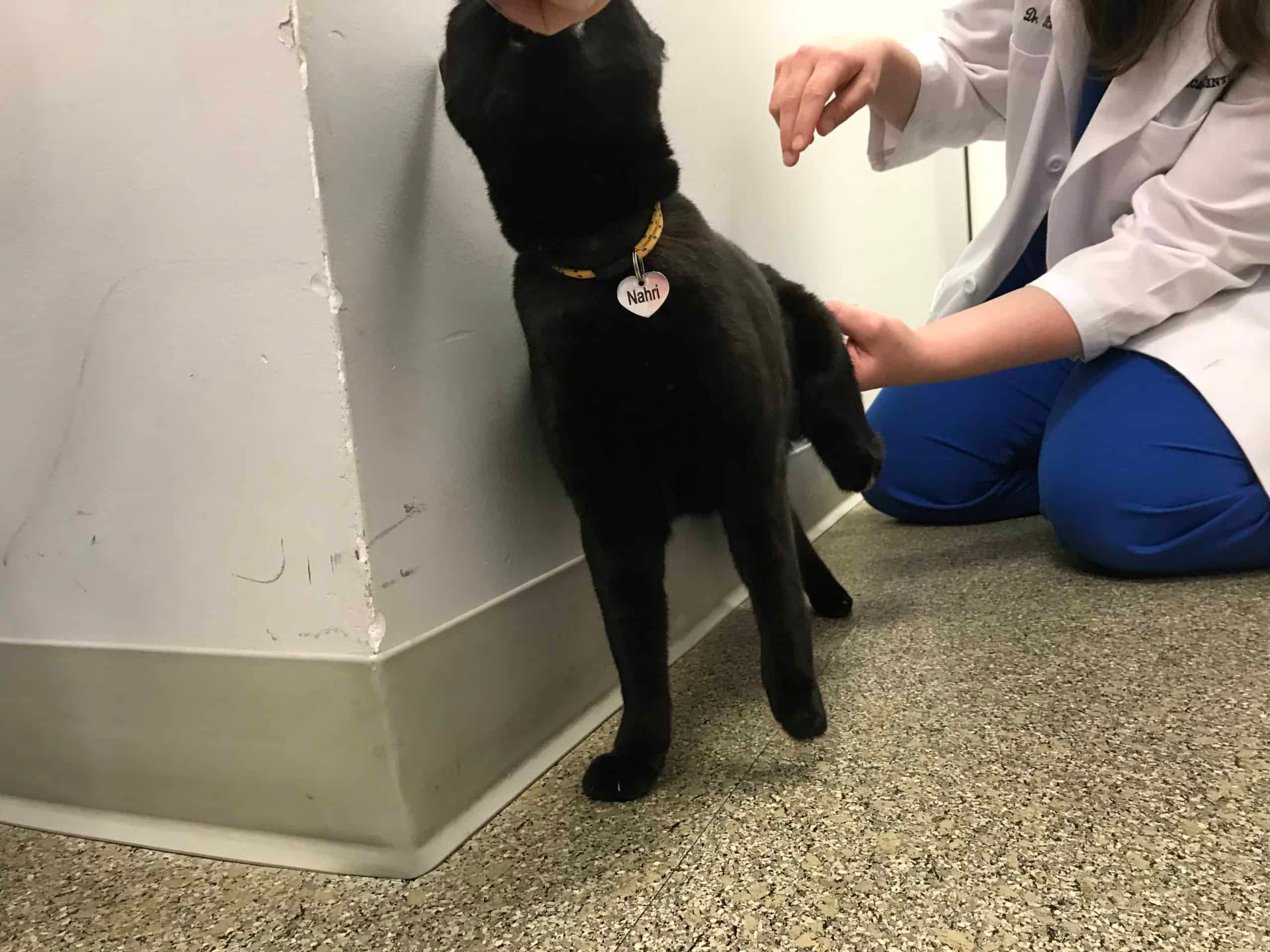Dutchess, the DUCK, and her OrthoPets Prosthetic Device
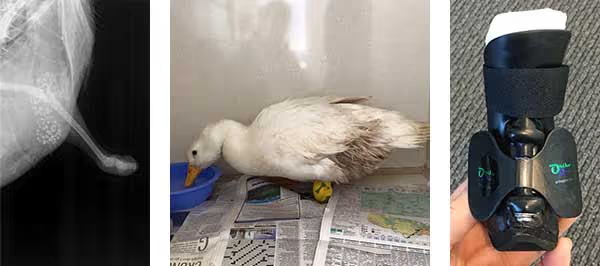
We love when we are given a challenge to solve an unusual problem and always get excited when we are approached to work with a less common species! In this case it was a Pekin Duck named "Dutchess." We were approached by her owner to discuss the possibility of fabricating a prosthesis for one of her limbs as she was missing her foot as well as a portion above it.
In June 2015, Dutchess was found at the town's Aquatic Park with other wild ducks. A Good Samaritan brought her to the veterinary hospital that the current owner worked at after noticing she had fishing line wrapped around one of her legs. After further evaluation, it was determined the affected portion of the limb was not viable. A partial limb amputation was performed to save as much limb as possible.

The next morning, they found her standing in her kennel hissing at the staff. At that point, her current owner decided that she would be able to have a better recovery at home as she had a few other ducks that could help motivate her. After several months of bandage changes and restriction, she was able to go out in the pen with the other ducks. In addition, all of the handling during the healing process helped tame her. Dutchess was doing well but her owners now noticed that she was starting to struggle with some normal activities such as grooming and getting around in the winter. Her owner sought out OrthoPets hoping to improve her mobility enough that she could spend some time in the water and have enough balance to groom properly.
When we started the process, there were a few challenges we needed to overcome. The owner had tried to make an impression of the limb, but Dutchess did not want any part in that process. Since sedation was too risky for Dutchess, we used calibrated radiographs and circumferential measurements of her limb in lieu of a fiberglass impression. Our computer modification system allowed us to create a 3D model of the shape of her residual limb. The next challenge was a device she could use in the water that replicated a flipper. When her foot moved forward we wanted little to no resistance against the water and when she pushed her foot back we wanted the device to somewhat open so that water could be scooped and she could propel forward. This concept was achieved by making what is called a "shroud" out of a flexible piece of plastic that is set up to flap open and closed along a bolt. The inside of the device is fabricated similarly to a standard prosthesis to ensure comfort when walking.
Dutchess and her owners were so happy to have her prosthesis and try it on for the first time. Though Dutchess is going to take some time to adjust to it, the owners are very dedicated to her rehabilitation and have been working with her at home. Dutchess has been seen shaking her feathers while in her device which lets the owners know she is happy with it and they feel with some time she will figure it out and greatly improve her mobility. You can see more of Dutchess's progress in videos on our Vimeo video channel.

